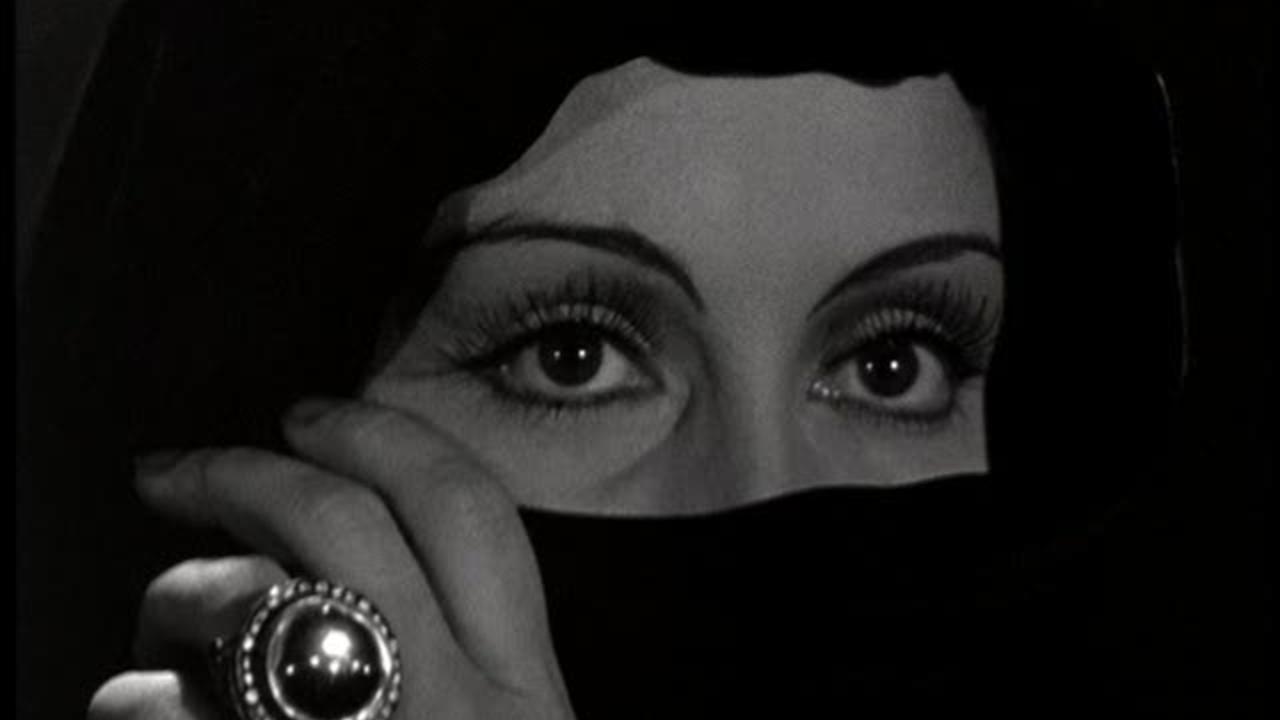
Dracula’s Daughter (Lambert Hillyer, 1936, 71 min.)
“Why should Cecil B. DeMille have a monopoly on the great box office values of torture and cruelty?” asked John Balderton, the writer of a first draft of this long-delayed sequel to Dracula, the iconic, if somewhat tepid, 1931 version of Bram Stoker’s famous novel. Balderton envisioned a grisly horror film, full of the shrieks and cries of the damned, but his version didn’t make the cut. Instead, this version, based on one of Stoker’s stories, finally hit the screens in 1936, heavy on atmosphere and shocking (for its time) sexuality. Although it is a marked improvement on the original film, it’s still a bit of a snooze, relying too much on forced comedy and not enough on suspense or fright.
The film picks up exactly where the first film left off. Von Helsing (Edward Van Sloan), who was Van Helsing in the first film, has just offed Dracula, and Whitby constables stumble on the scene and arrest him as a murderer. The constable in charge is faced with quite a decision: try Von Helsing for murder and likely hang him, put him in the looney bin because of all his talk about vampires, or believe him. Von Helsing implores him to call on one of his former students, the renowned psychologist Dr. Garth (Otto Kruger), to help clear him.
Meanwhile, before things can get underway, a mysterious woman steals Dracula’s body and destroys it. Gloria Holden is Countess Zaleska, the titular daughter. She thinks that destroying her father’s corpse will free her from her vampiric curse, but it doesn’t work, as is obvious as soon as she returns to London and starts ogling the necks of dapper young men. It doesn’t help that her helper Sandor (Irving Pichel, who co-directed the great action film The Most Dangerous Game) keeps taunting her about how much she needs blood. The film treats vampirism as more of an addiction than an evil curse, and it’s fitting that she keeps an enabler around to sabotage her efforts to get clean.
After meeting Dr. Garth at a party, she decides that his experiments in hypnosis will help her. She attempts to seduce him, but he’s wary, especially as the body count in London starts to rise, as victims with strange puncture wounds on their necks start turning up. In the centerpiece of the film, as Zaleska attempts to do some painting to distract her from her need for blood, she enlists Sandor to bring her a model, Lili (Nan Grey). The sight of Lili’s lily-white neck proves too much for her, and in a sexually charged scene, Zaleska slowly moves toward the frightened young girl; at the last moment, the camera tilts up to record a smug-looking tribal mask, obviously enjoying the lesbian encounter below.
Any suspense is constantly broken up by the allegedly playful, flirting banter between Dr. Garth and his assistant, the heiress Janet Blake (Marguerite Churchill). He plays the stodgy older man to her uninhibited younger woman, and although there’s probably supposed to be a romantic spark there, all I felt was annoyance. Churchill’s character seems to really exist only to be put in peril so that her brave protector can save the day.
The film makes the most of Holden’s almost patrician face and admittedly hypnotic eyes. She’s no beauty by most standards, but as the scion of a vampiric Count, she’s exactly right. The menace and erotic interest she arouses would have been absent, had the filmmakers gone with a more typical Hollywood pretty face. She has a good match in Irving Pichel as her savant Sandor, whose glowering, mocking eyes push her toward evil. Sadly, the good guys don’t have much personality. Kruger, as Garth, has a demeanor that says “annoyed” more than anything. Edward Van Sloan—although the events of the previous film make it quite clear that he’s not crazy—seems a little off, and I wondered whether the film was trying to make some observation about his single-minded pursuit of vampires.
Zaleska wasn’t the only one who was cursed: the film was late and over budget, and during filming, a heavy lamp fell onto director Lambert Hillyer’s head, putting him in the hospital. It was supposed to save Universal, but it failed; Carl Laemmle had to sell the studio before the film even opened. The film is a middle-level entry in Universal’s stable of horror films, certainly better than its predecessor, but certainly not up with Bride of Frankenstein.

